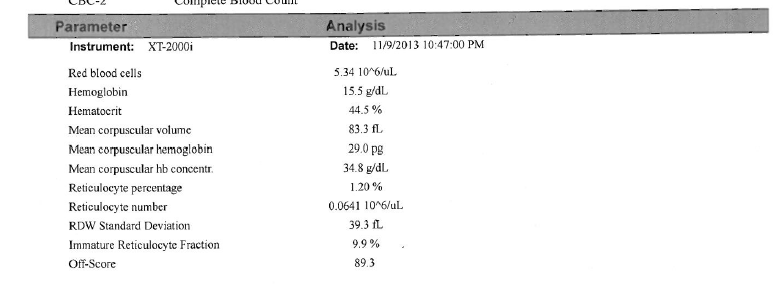Today it was announced by the UFC that Jessica Penne had become the first victim of the Athlete Biological Passport (ABP) after discrepancies led to target analysis of a sample from March 2017. So what is the ABP?
What is the Athlete Biological Passport (ABP)?
In short, the ABP is an ongoing record of an athletes key hormonal, steroidal, haematological and physiological markers over a period of time. It is made up of two key modules:
- The Haematological module
- The steroidal module
The Haematological module
The haematological module, or blood module for simplicity is the module that monitors key areas of the athletes blood data.

With every blood sample an athlete provides key values such as Hemoglobin, Hematocrit (Percentage of red blood cells), Reticulocyte’s (Immature blood cells), and off-score are recorded.
The system constantly monitors this data and if an anomaly pops up in the athletes data then the system flags that athlete for further investigation. For example, a sudden increase in the athletes hematocrit could indicate EPO use, a sudden variation in off-score could indicate the athlete had undergone a blood transfusion to improve performance.
The Steroidal module
In a similar way, every time an athlete provides a urine sample to the relevant anti doping agency as well as that sample being analysed for an array of prohibited substances, key markers are also recorded and added to the athletes profile.

These values that are monitored over the long term include urinary testosterone levels, epitestosterone levels, t/e ratio (ratio of testosterone to epitestosterone), Androsterone, Etiocholanolone, and others. Again, as with the blood module, a sudden variance in any of the data can lead to an athlete being flagged by the system. A sudden jump in testosterone levels for instance, may lead to Carbon Isotope ratio testing for exogenous testosterone.
So an athlete is flagged, what then?
Generally when an athlete is flagged the data is passed to a Biological Passport Panel who then may decide on various courses of action.
- The anomaly could be simply explained and no further action is taken
- They could recommend specific target testing of the athlete, at certain times, or for analysis for certain substances
- They could, as in the case of Penne recommend retroactive testing of certain samples, for instance they could suggest GC/C/IRMS (Isotope ratio testing) on a sample that had previously only been subjected to a standard steroid screen.
- They could decide purely on the data evidence to move forward with charging the athlete with a Biological Passport Violation.
Why are we only now seeing the first violation based on ABP Data?

Its not possible to detect variances in the human physiology over just 1 or 2 samples. Common consensus is that it requires at least three or four samples to start getting worthwhile passport data, and in reality, it can be 18 to 24 months into a testing program before the ABP becomes a valuable tool.
In the case of Penne this was understood to be her sixth urine sample provided to USADA (in addition to two blood samples) and crucially it was her second fight night sample provided to USADA.
With most UFC athletes now heading into double figures for samples provided (Nearly 100 athletes have now provided 10+ samples to USADA), we may see more violations related to the passport in the coming months.
When the sample was collected will also have an impact. For Penne this was her second fight night sample provided to USADA so it could be that a direct comparison was made between the March fight night sample, and her prior fight night sample (June 2016) and it was a discrepancy between the two that led to targeted re-analysis. Had retroactive analysis of Penne’s samples come up blank, then USADA may instead chosen to target test her going forward, but, they hit the bullseye with the first dart, so to speak.
What happens now?
Normally with a bio passport violation the athlete would be given a chance to explain the variance in the data, provide medical evidence which the biological passport would review and either accept, reject, or demand further evidence.
In Jessica’s case this is immaterial as there is now a positive test in play so her case will proceed like any other case involving a positive test for a prohibited substance.
Further Reading
A Closer Look: Athlete Biological Passport (USADA)
The Biological Passport: Legal, Scientific and Performance views (Ross Tucker)